
Green wreaths made of Fraser fir, holly, popcorn berry, and apples deck the Chippendale gates at the entrance of the farmhouse. Mary Spotswood constructed the traditional fruit fan above the transom by pinning fresh fruit to a semi-circular sheet of plywood and garnishing it with greenery.
Not all family traditions are passed down through generations. Some of the most cherished are those we create on our own—a notion that event and floral designer Mary Spotswood Underwood holds close to the heart. Although her parents owned a historical home called Brooke’s Bank in Essex County, Virginia, for much of her childhood, they never seemed to make it there for Christmas. For the past six years, Mary Spotswood has been making up for lost time every December as she and husband Joe pack up their family of five and set out on the nine-hour drive from their home in Nashville. This year, however, they won’t have to travel far since they now officially call Brooke’s Bank home.
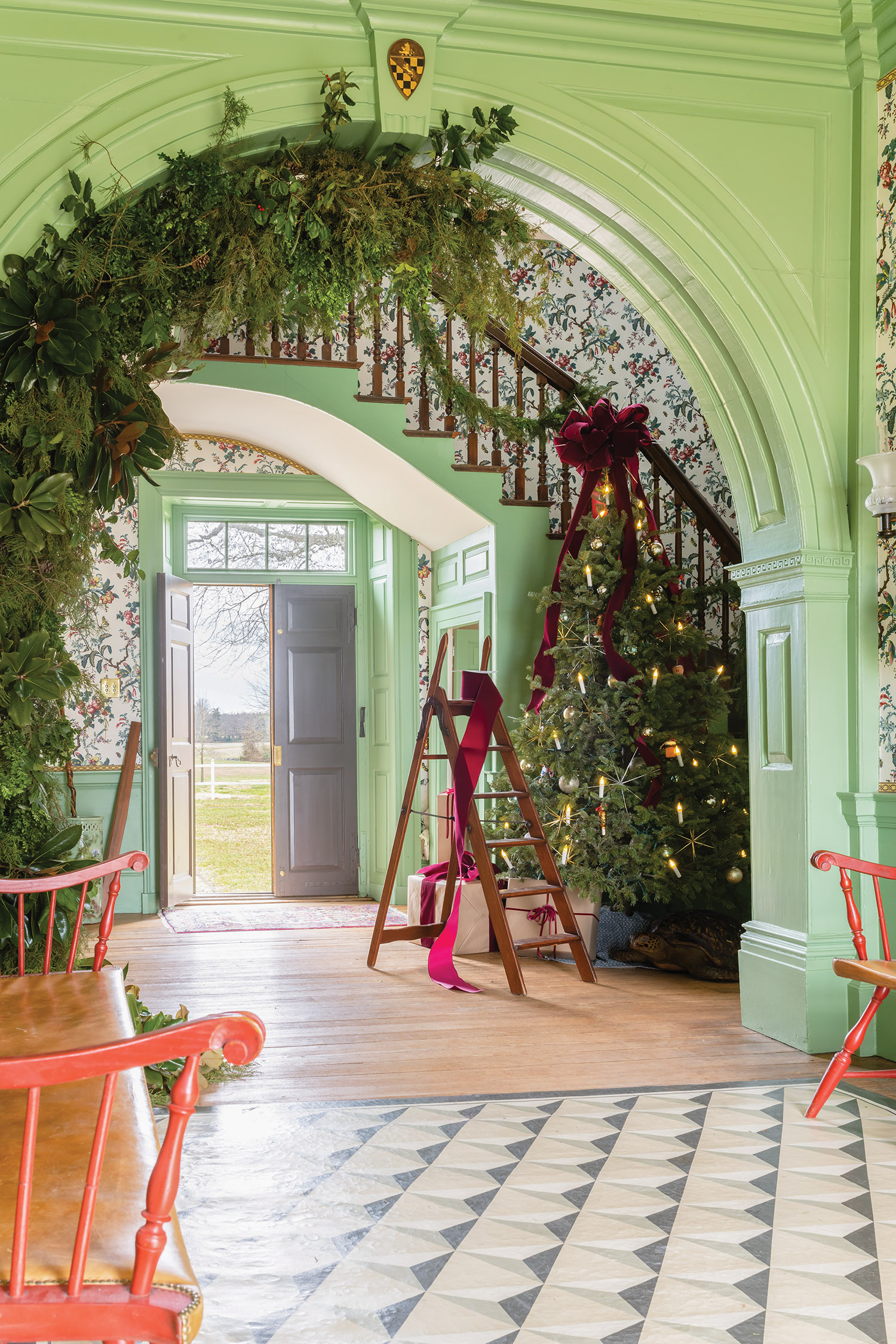
The entry is wrapped in Adelfi’s Butterfly Chintz, inspired by an 18th-century French floral print from the archives of the Colonial Williamsburg Collection. The vibrant green walls and millwork in the adjoining spaces were custom colored and based off of layers of paint found during excavation.
Listed on the National Register of Historic Places, Brooke’s Bank is named for its original owner, Sarah Taliaferro Brooke. She was granted the land by King George II in recognition of her late husband, a Royal Navy officer, who died during battle. Brooke oversaw the construction of the home that was completed in 1751. It has since been lauded by architectural historians as a prime example of Georgian style thanks to exterior elements such as formal lines, fine brickwork, and a hipped roof, as well as interior features including a wide center hall, sweeping archways, and intricate millwork. Over the years, the home has gone through two significant renovations— the first in 1930 by the Enos Richardson family and the second in 1994 by Mary Spotswood’s parents who enlisted architect Peter Pennoyer and interior designer Thomas Jayne with the three-year, museum-quality restoration.
See The Decorative Arts Trust’s video tour of Brooke’s Bank.
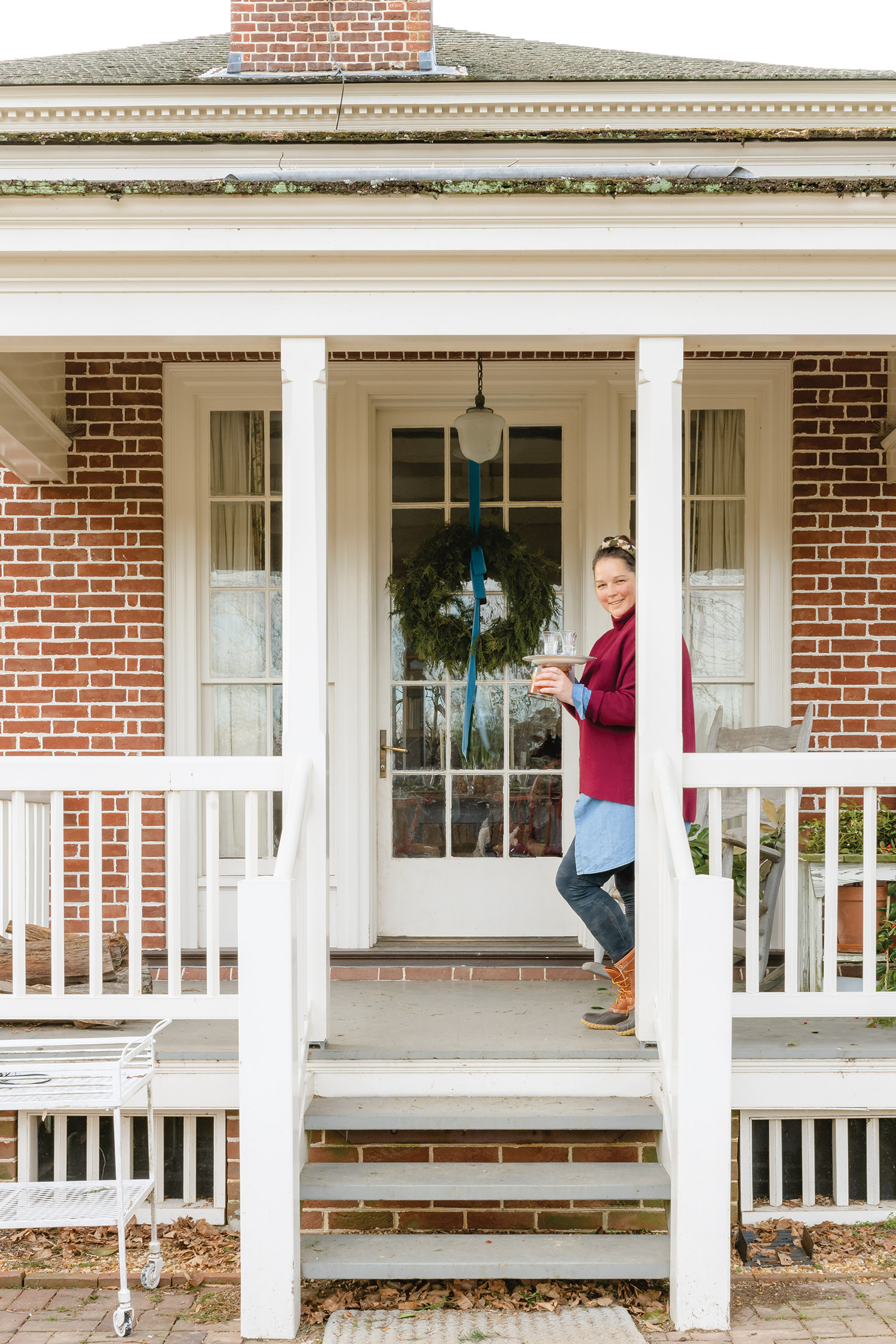
Mary Spotswood relaxes on the porch off the kitchen.
“The most beautiful and special thing about this home is its authenticity,” Mary Spotswood says. “Most of the original architectural details have remained intact after centuries, and what wasn’t preserved or restored was painstakingly replicated. The whole process was a labor of love for all those involved.”

The colonial blue cupboard displays a treasure of new and antique creamware bowls, flower bricks, and Blue Willow plates and platters, while the table is set with antique blue feather-edge ironstone. The pattern, common for that period, is believed to be the original pattern used at the house as several chards were unearthed during the restoration process. Garlands and sprays made from magnolia, holly, boxwood, pear, and apples breathe new life into the centuries-old spaces.
Every design decision that was made was driven by history—even the color scheme. After months of research and testing, Thomas Jayne devised a historically accurate palette, including shades of greens and blues that would have been used during the Federal period. Mary Spotswood employed a similar approach to create a holiday decorating concept that would respect the home’s distinguished heritage. “The everyday furnishings and decorations are simple and somewhat sparse so that the beautiful bones remain front and center,” she says. “To enhance and balance them, I sculpted greenery in different tones and textures to help them stand out.”
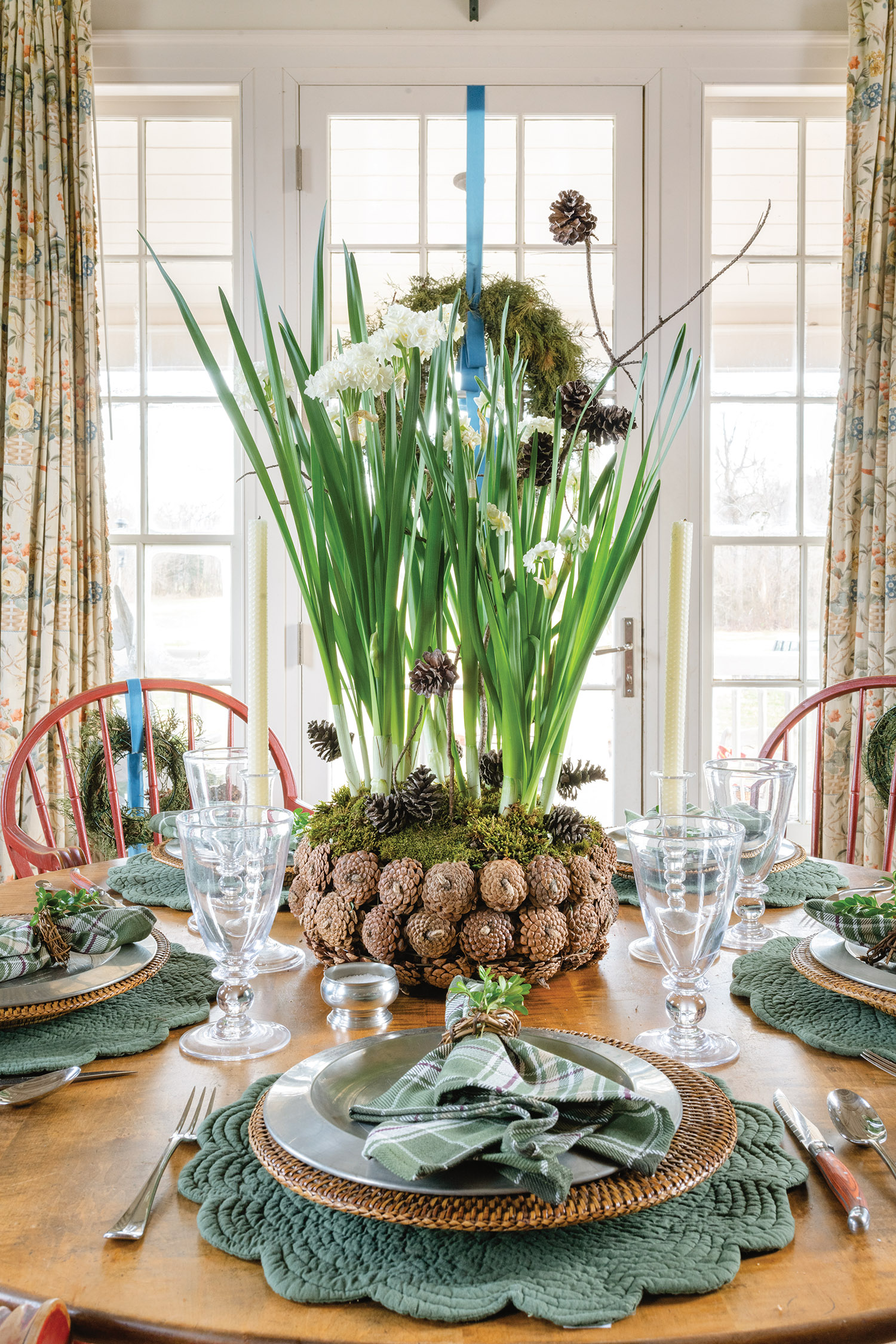
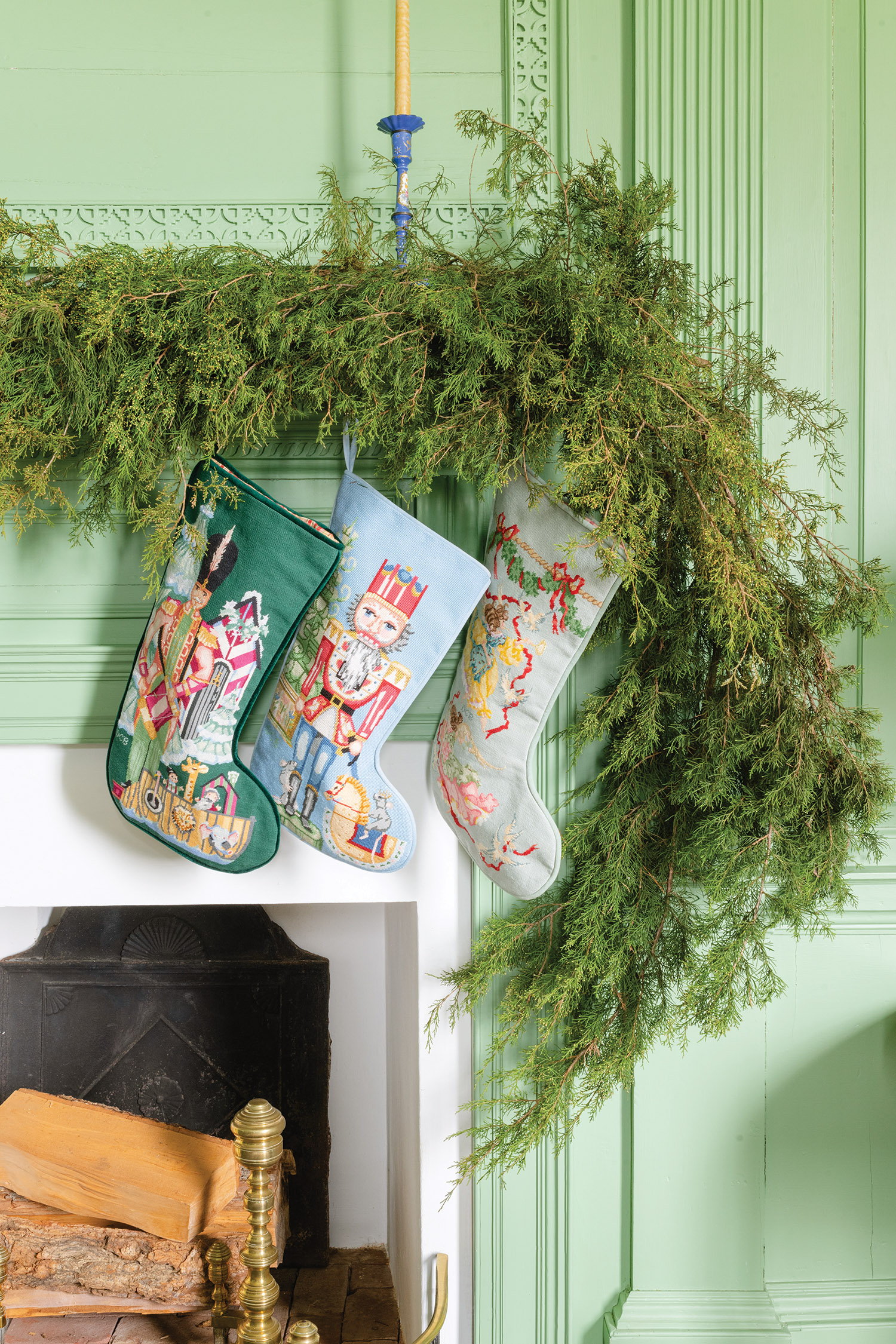
—Mary Spotswood Underwood
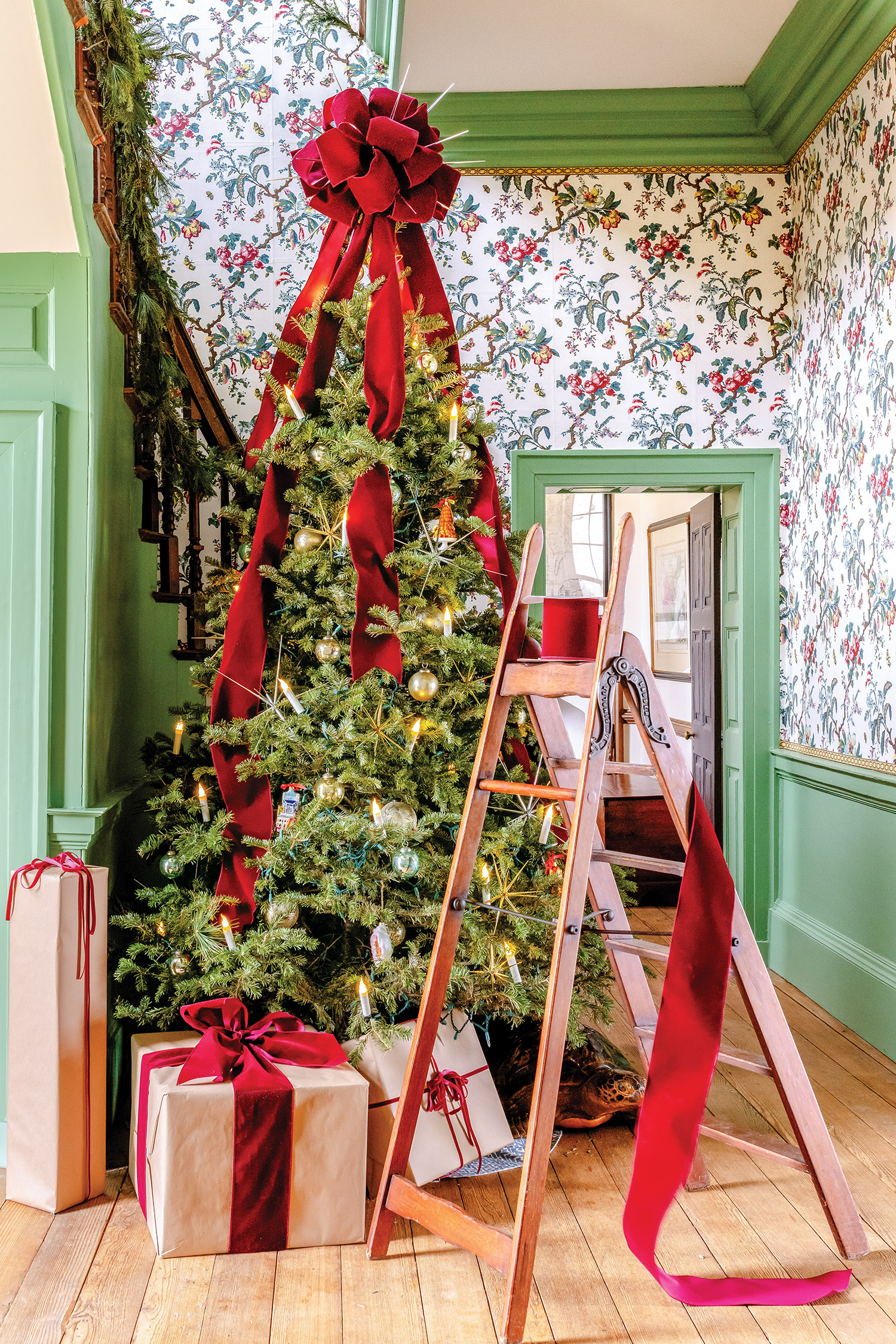
English boxwood, fir, holly, and magnolia are peppered with sweet gum and pine cones to lend a more sculptural quality to the décor, while juniper, cypress, smilax, and mistletoe infuse softness and whimsy. To attain a look that she calls “farm to home,” Mary Spotswood foraged the property to gather all the greenery for her wreaths, garlands, and arrangements. She even sourced the crafting materials and tools the old-fashioned way. “We are a bit isolated out here, so I don’t have the luxury of making a quick run to the garden center or hardware store,” Mary Spotswood says. “I was tickled to find some small, rusty wreath forms hidden in an old drawer in the flower room, but there were not nearly enough. I decided to scour the barn for materials such as twine and chicken wire to make my own.” She even found an old basket filled with bolts of velvet ribbon that had faded over time to create an ombre effect. “I used the ribbon for hanging things whenever I could for two reasons—to protect the walls and woodwork and also for a more colonial look,” Mary Spotswood says. It’s this organic approach to holiday décor that perfectly complements the historical significance of the home—one sure to be filled with new memories for years to come.
By Margaret Zainey Roux | Photography by Mary Craven Dawkins



